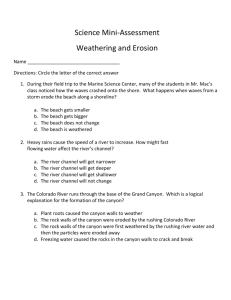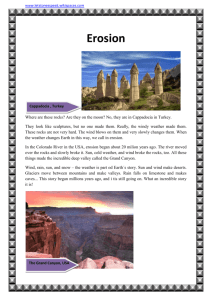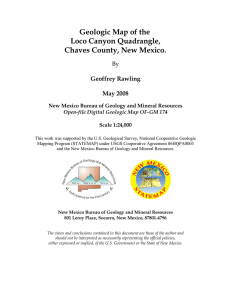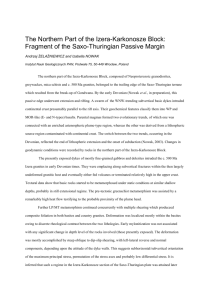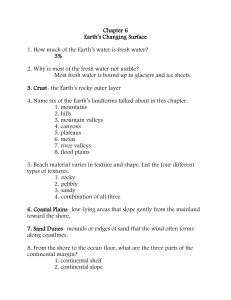Abstract
advertisement
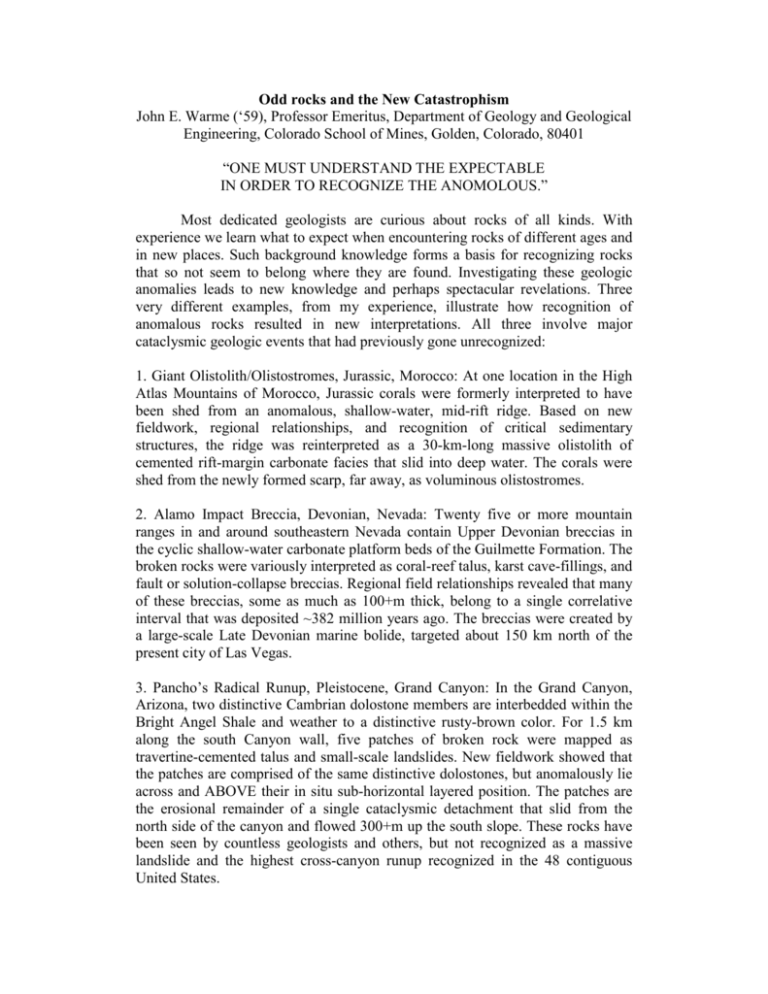
Odd rocks and the New Catastrophism John E. Warme (‘59), Professor Emeritus, Department of Geology and Geological Engineering, Colorado School of Mines, Golden, Colorado, 80401 “ONE MUST UNDERSTAND THE EXPECTABLE IN ORDER TO RECOGNIZE THE ANOMOLOUS.” Most dedicated geologists are curious about rocks of all kinds. With experience we learn what to expect when encountering rocks of different ages and in new places. Such background knowledge forms a basis for recognizing rocks that so not seem to belong where they are found. Investigating these geologic anomalies leads to new knowledge and perhaps spectacular revelations. Three very different examples, from my experience, illustrate how recognition of anomalous rocks resulted in new interpretations. All three involve major cataclysmic geologic events that had previously gone unrecognized: 1. Giant Olistolith/Olistostromes, Jurassic, Morocco: At one location in the High Atlas Mountains of Morocco, Jurassic corals were formerly interpreted to have been shed from an anomalous, shallow-water, mid-rift ridge. Based on new fieldwork, regional relationships, and recognition of critical sedimentary structures, the ridge was reinterpreted as a 30-km-long massive olistolith of cemented rift-margin carbonate facies that slid into deep water. The corals were shed from the newly formed scarp, far away, as voluminous olistostromes. 2. Alamo Impact Breccia, Devonian, Nevada: Twenty five or more mountain ranges in and around southeastern Nevada contain Upper Devonian breccias in the cyclic shallow-water carbonate platform beds of the Guilmette Formation. The broken rocks were variously interpreted as coral-reef talus, karst cave-fillings, and fault or solution-collapse breccias. Regional field relationships revealed that many of these breccias, some as much as 100+m thick, belong to a single correlative interval that was deposited ~382 million years ago. The breccias were created by a large-scale Late Devonian marine bolide, targeted about 150 km north of the present city of Las Vegas. 3. Pancho’s Radical Runup, Pleistocene, Grand Canyon: In the Grand Canyon, Arizona, two distinctive Cambrian dolostone members are interbedded within the Bright Angel Shale and weather to a distinctive rusty-brown color. For 1.5 km along the south Canyon wall, five patches of broken rock were mapped as travertine-cemented talus and small-scale landslides. New fieldwork showed that the patches are comprised of the same distinctive dolostones, but anomalously lie across and ABOVE their in situ sub-horizontal layered position. The patches are the erosional remainder of a single cataclysmic detachment that slid from the north side of the canyon and flowed 300+m up the south slope. These rocks have been seen by countless geologists and others, but not recognized as a massive landslide and the highest cross-canyon runup recognized in the 48 contiguous United States.
